BY STEVE POND
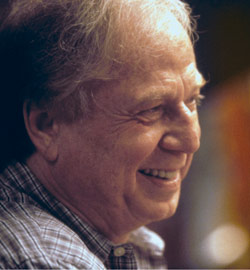 Water is a notoriously difficult medium for a movie director—but for Wolfgang Petersen, it’s been a crucial part of his career. The German director’s first big international success, Das Boot, was set on a WWII submarine; his 2006 remake of Poseidon turned an ocean liner upside down. In between, in 2000, he faced the roughest seas of all in The Perfect Storm, his blockbuster hit that told the story of the Andrea Gail, a Gloucester-based fishing boat that was lost in the Atlantic Ocean during the so-called "Storm of the Century" in 1991.
Water is a notoriously difficult medium for a movie director—but for Wolfgang Petersen, it’s been a crucial part of his career. The German director’s first big international success, Das Boot, was set on a WWII submarine; his 2006 remake of Poseidon turned an ocean liner upside down. In between, in 2000, he faced the roughest seas of all in The Perfect Storm, his blockbuster hit that told the story of the Andrea Gail, a Gloucester-based fishing boat that was lost in the Atlantic Ocean during the so-called "Storm of the Century" in 1991.
"Most of the time the ocean is not very friendly, to say the least," laughs Petersen, who struggled with changing weather and seasick cast and crew members just shooting a handful of scenes in calm weather off the New England and Southern California coasts. Three days of exterior shots were filmed on the edge of a hurricane for the early portions of the storm but when it came time to shoot the film’s climax—in which the Andrea Gail is battered and eventually capsized by the biggest storm ever recorded—he knew that heading for real rough waters wasn’t an option. "Control is the crucial word if you make a movie about water—otherwise you’ll go crazy," he says.
His solution was to mix studio work on a full-sized, 72-foot Andrea Gail replica with groundbreaking water effects from Industrial Light and Magic. The sequence was not only the most realistic and harrowing storm ever captured on screen, but it created an iconic image—a tiny boat struggling up the side of a monstrous wave—that would instantly identify the film in all of its advertising.
We took the biggest stage at Warner Bros., Stage 16, and our special effects people suggested we tear open the floor and build a huge tank. We put a computer-controlled gimbal in the tank and our full-length, original-size Andrea Gail. Then we put two or three gigantic dump tanks around it, the biggest wind machines we could find, and of course a blue screen all around the whole stage. We could then do whatever we wanted and keep it under control. In this shot you see our boat and our water around it. And then ILM had the tricky task, with the help of blue screen, of extending the water into infinity.
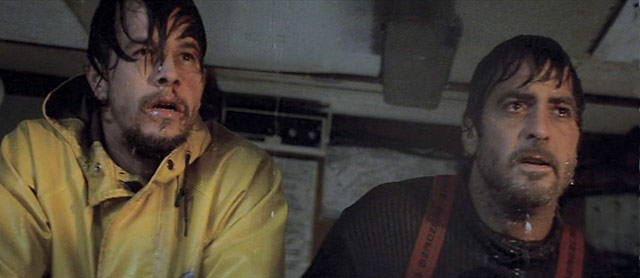
The tank was so large that to talk to the actors about the shot, I had to take a little boat over to them. But John Seale, the cinematographer, had the time of his life, because he always had three cameras on these Louma Cranes that were completely sealed, so you could go up into the air and down into the water without any cuts. In this shot, we know that they are in deep trouble. But you see some light on their faces, the sound effects go way down and it gets eerily quiet. It’s the moment where fate plays games with you and Mark Wahlberg’s character says, ‘Skipper, we’re gonna make it!’ Of course, you see on George Clooney’s face he knows what’s coming.
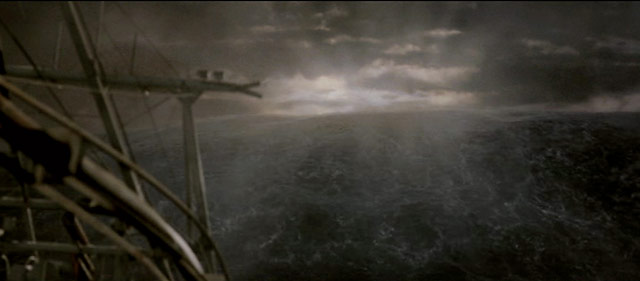
This is what they see. It’s a typical shot. In the foreground on the left side is our boat, shot on stage in front of nothing but blue screen. Probably a second unit shot, quite boring if you saw it—but when ILM puts all their stuff in, it’s exciting. And the sound is very important here. The wind, when it goes through the riggings, makes a special high-pitched, unnerving sound. In a situation like this, with the sound you go down to almost zero because you also want to give the audience the illusion it might be over. You play with the audience.
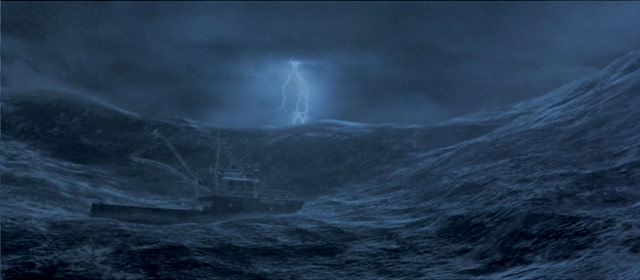
The sound slowly builds up again, and the storm is coming back full force. It gets really dark, and you know we are probably in the final stretch because from here we go to total pandemonium. This is a complete ILM shot. I wanted the boat to be so small that the lightning coming down on them is quite scary. And because the boat is so tiny, we couldn’t get a wide shot like that on the stage. So ILM did it. We didn’t use miniatures, but you can switch to a computer model for the boat and nobody can tell the difference.
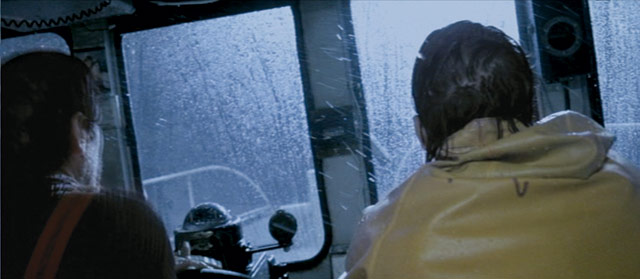
The cameraman was standing right behind the actors in the cabin. It was a solid boat with no movable walls, and we just had to deal with the narrow space. And when the water crashes over the boat, we provided that with our dump tanks. The tanks were high up and filled with about 2,000 gallons of water. They slide down with enormous speed and crash onto the floor, and send mountains of water over the boat with unbelievable power. All 200 people on the stage had a wonderful time watching it, with the exception of the six actors on the boat.
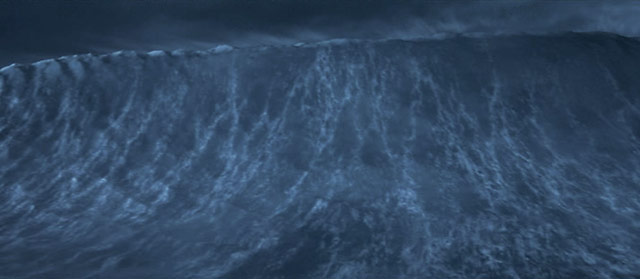
This is ILM. The audience always screams when they see this wave in all its glory. And of course we overdid it a little bit. I would say a 100-foot wave is maybe the biggest that’s been recorded. But the thing is, no one could have survived this wave in the film to record it, so it could have been bigger. We had a whole department doing research, asking how big, theoretically, can a wave get? If three storms collided—that’s the perfect storm—what could that mean in reality? I think they decided that a wave could reach 150 feet or so, but nobody knows for sure. So we added our 10 or 20 percent to that, and there it is.
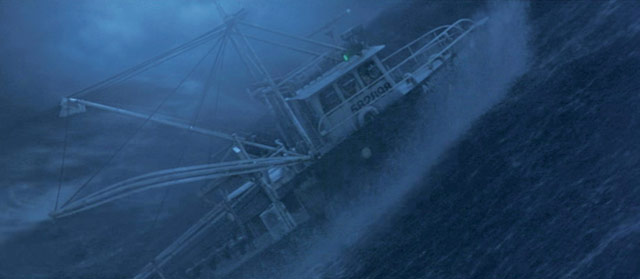
Again, this was our boat shot on the stage, with ILM background. If you zoomed in, you would see Clooney and Wahlberg there. We rarely had any stunt guys for the boys. We had young, very tough actors, and they went through a lot of rough stuff, but they liked it. They’d look at the monitor and say, ‘Oh my God, it looks so real,’ and then they’d limp away a little bit. We could really shake the boat and roll it and everything. And we could tilt it, I think, about 45 degrees. We could also slightly help with the camera by giving it a little bit more of an angle, and nobody would ever know.
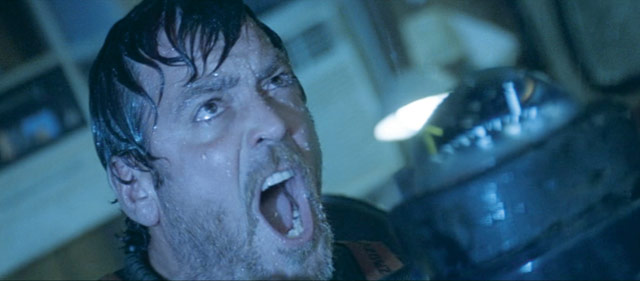
I always get goose bumps when I see this moment on screen. George is screaming at the wave—he knows it’s over, but he is trying to will this boat up the wave. This is a typical scene where we had three cameras on Louma Cranes. There was a camera outside looking in at Clooney and Wahlberg, and another camera to the right on a close-up of George, and a third one on a close-up of Mark. You cannot do 10 or 12 takes on a scene like this. George is at the top of his lungs, giving it his all. You can do it two or three times, and then he collapses. So to get everything with three cameras, without changing camera angles, that’s the goal.
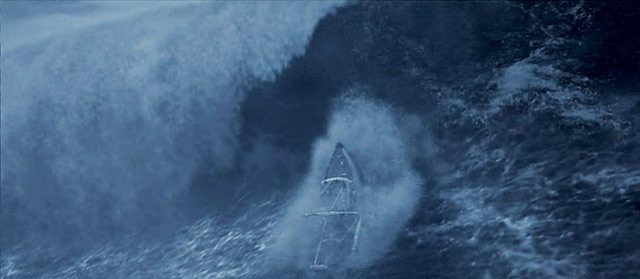
This was an image I had from day one, of the boat climbing this enormous wave and then slipping back and turning upside down. We could not do this wide shot or the capsizing on the stage, so this was ILM. One of the most difficult things is to make it feel like the boat is really surrounded by water, so you don’t see any edges and it all feels completely natural. It’s such a huge area, and everything should have the texture of reality. It took them months and months to do this one shot, which we needed for the teaser trailer. And then the very last day they finally got it and sent it over the computer to me. We basically rushed to the lab and put the trailer together.
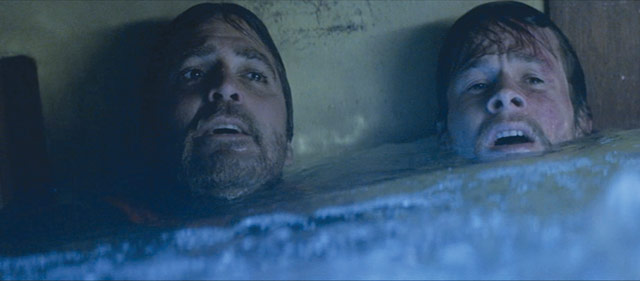
This was done very late in the shoot, when we had finished all our stuff with the Andrea Gail. We took the computer gimbal and the boat out of the tank, and we brought in new sets for the underwater work. We put the set on a hydraulic for the scenes where the water is slowly rising. You lower the set to raise the water level, and you throw some bubbly stuff into the water so it feels like the big boat is really going down. Boy, I’ve done that so often. It’s much easier to control it that way than to raise the water level by pumping in more water.
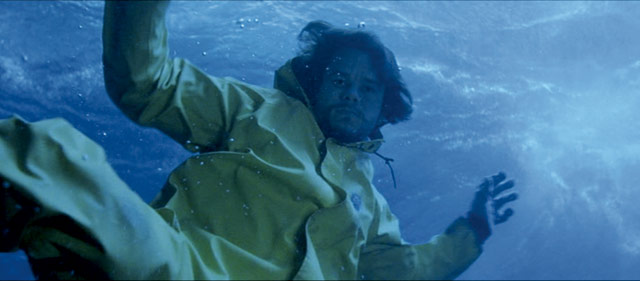
Clooney says, ‘Let’s get out of here.’ Wahlberg is the kid, and Clooney wants to give him the possibility of living a little longer. So now Wahlberg is out, and there’s this great movie moment, a last look between the two guys. That was all done in that wonderful tank. The camera was right on the crane, sealed, and then bloop, underwater, here we go. We tried to help the actors by raising the temperature of the water just a little bit. But we couldn’t do it too much, because it’s a gigantic mass of water, and if it gets too warm, you get a breeding ground for things you don’t want. So it was still damn cold.
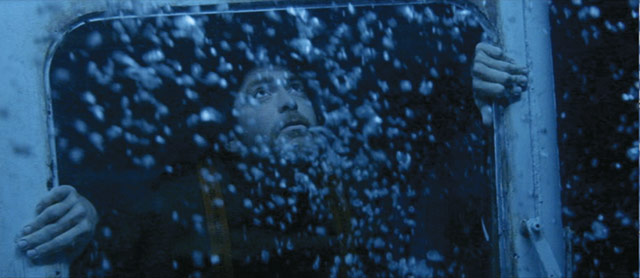
He’s staying behind, doing what a good captain does. Again, this was in the tank, with the sealed camera on a Louma Crane. We did the bubbles right there, though I’m never quite sure—maybe later we asked ILM to add a few. These were tough scenes, because it’s a real story, and the loved ones of these people are still alive. We tried to show the deaths with a little bit of distance and a little bit of dignity, and not get too gruesome. You see Clooney going back into the ship, and then you don’t see any more of him.
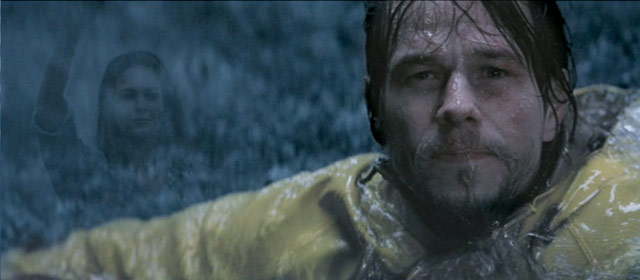
This is a digital composite of Wahlberg and Diane Lane. Just a double image, fairly easy to do. They could have done that in 1932. But with digital, you can move it around, have it where you want it, put a few bubbles over it all and make it more dreamlike. We debated back and forth—is it too corny? And finally, we decided to do it. It’s borderline, I know, but after this enormous stress the audience goes through, you’re thankful for some positive emotion and some peace when he says, ‘This is not goodbye, there’s only love.’ It gives you some closure.
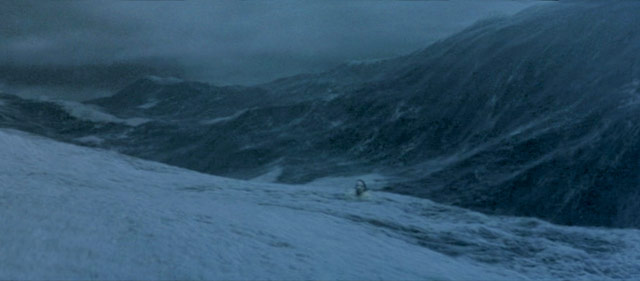
This is what they call a standard stamp shot. You take our shot of Wahlberg in our tank, which is basically a close-up, the size of the previous shot. And then you go and make it really small and put it into the gigantic water landscape. The shot goes wider and wider and then the next huge wave rolls over him, and he’s not there anymore. I’ll never forget, I was in a restaurant with my wife and a friend, and all of a sudden I was very quiet, and they asked me, ‘What’s going on?’ I said, ‘I just saw the last shot of our guy. He’s a tiny speck in this gigantic, rolling ocean, and then he’s gone.’